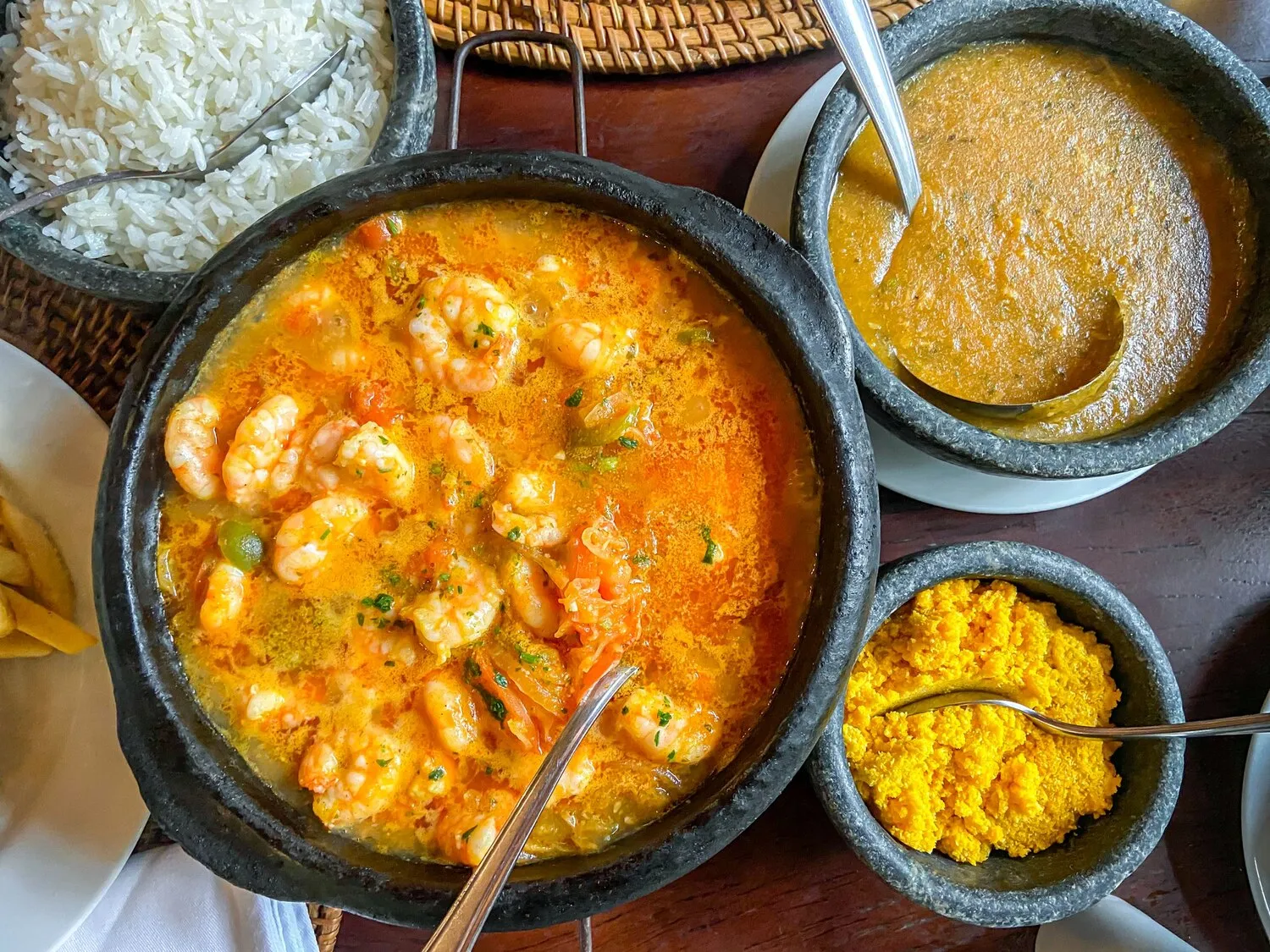
Moqueca Capixaba
Traditional Brazilian seafood stew with fish, tomatoes, onions, garlic, cilantro, and annatto oil, simmered in a clay pot. Likely contains other seafood components as well.
Nutrition Facts
* The % Daily Value (DV) tells you how much a nutrient in a serving of food contributes to a daily diet. 2,000 calories a day is used for general nutrition advice.
Moqueca Capixaba's origins are intertwined with the indigenous peoples of Espírito Santo, Brazil, who used clay pots to cook fish stews long before European colonization. Over time, African and Portuguese influences were incorporated, particularly with ingredients like dendê oil (palm oil) and coconut milk in other regional variations (Moqueca Baiana), but the Capixaba version notably excludes these. The simplicity of the ingredients and the clay pot cooking method reflect a historical reliance on readily available resources.
Moqueca Capixaba is deeply ingrained in the culinary identity of Espírito Santo, Brazil. It's more than just a dish; it's a symbol of regional pride, family tradition, and a connection to the sea. Sharing a Moqueca is a communal experience, often enjoyed with family and friends.
Regional Identity
Moqueca Capixaba is considered a defining dish of Espírito Santo, setting it apart from other Brazilian regional cuisines. It is fiercely protected as a unique culinary heritage.
Family Gatherings
Preparing and enjoying Moqueca is often a central part of family celebrations and gatherings. Recipes are passed down through generations, each family adding their own personal touch.
Clay Pot Tradition
The use of a clay pot (panela de barro) is essential for authentic Moqueca Capixaba. The porous nature of the clay helps to retain heat and distribute it evenly, enhancing the flavors of the ingredients.
Seafood Significance
Given Espírito Santo's coastal location, fresh seafood plays a vital role in the region's cuisine. Moqueca Capixaba is a testament to the abundance and quality of the seafood available.
Moqueca Capixaba presents a delicate and savory flavor profile, emphasizing the freshness of the seafood and the subtle sweetness of tomatoes and onions. The dish is aromatic, with garlic and cilantro adding bright herbal notes, while the annatto oil provides a mild earthy undertone and a vibrant color.
The primary flavor is derived from the fresh fish, typically white fish like sea bass or grouper. The tomatoes and onions create a subtly sweet and acidic base. Garlic provides pungent aromatics, while cilantro introduces a fresh, herbaceous element. Annatto oil (urucum oil) contributes a mild earthy flavor and a reddish-orange hue, visually enhancing the dish. The absence of dendê oil and coconut milk, which are present in Moqueca Baiana, allows the natural flavors of the seafood to shine through more distinctly, resulting in a lighter and less intense flavor profile.
Freshness is Key
Use the freshest seafood possible. This will significantly impact the overall flavor of the dish. Local, seasonal fish is always preferred.
Clay Pot Seasoning
Before using a new clay pot, it should be seasoned properly. This typically involves curing it with oil or soaking it in water to prevent cracking during cooking.
Gentle Simmering
Avoid boiling the Moqueca. Gentle simmering allows the flavors to meld together without toughening the fish. Patience is key.
Layering Ingredients
Layering the ingredients in the pot helps to distribute the flavors evenly. Start with a base of onions and tomatoes, then add the fish, followed by more vegetables and aromatics.
Urucum Oil Authenticity
Using real urucum oil (annatto oil) is crucial for the authentic flavor and color. Look for oil made with annatto seeds simmered in a neutral oil.
Explore additional Stew dishes and restaurants
Explore StewDiscover top dining spots and culinary experiences in São Gonçalo.
Explore São GonçaloLearn more about the food culture, restaurant scene, and culinary heritage of Portugal.
Explore Portugal